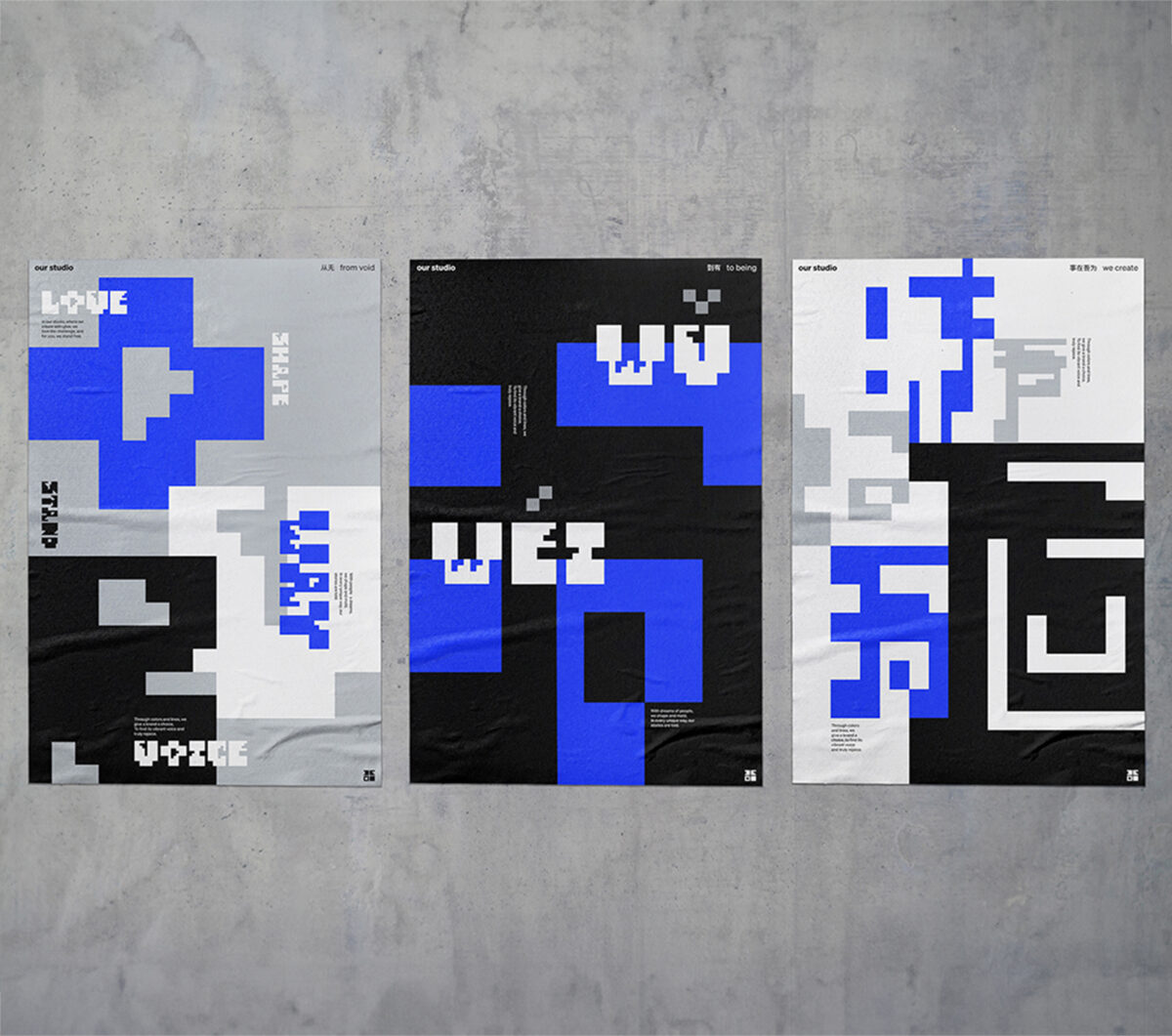Shuang Wu
Assistant Professor
Virginia Tech
My research explores how graphic design can bridge cultures through translation. Drawing from a multicultural educational background, the study examines the complexities of translation across diverse cultures. Recognizing that certain words, phrases, and cultural meanings are untranslatable, it asks: how can graphic design convey these non-translatable elements through visual expression? The study addresses this question through personal works and pedagogical experiments.
The research begins with A Poetic Space, an immersive project that visualizes ancient Chinese poems using lines, motion, sound, and typography. This approach transcends literal translation, allowing non-Chinese-speaking audiences to appreciate the essence of thousand-year-old Chinese poetry.
Expanding on this, we also explore how visual aids enhance the translation of Chinese culture. A poster series featuring Taoism-inspired phrases reconstructs Chinese characters using an innovative grid, revealing Taoist concepts within the phrases.
In the classroom, I prompt students to investigate how visual elements can translate languages beyond Chinese. Students visually explored non-translatable words from different languages through multimedia. For example, one student created a book based on the Russian word “Toska,” meaning deep sorrow, using a broken typewriter to convey a personal and emotional narrative. This project demonstrates how design can express universal human feelings across languages.
This research shows that graphic design can convey cultural and linguistic nuances that have no direct translation, offering a model for similar projects in various languages and cultures. By using innovative visual methods, it provides ideas for designers and educators to enhance cross-cultural communication and understanding. The practice also aims to shift the focus away from Western design philosophy, encouraging international audiences to appreciate and embrace underrepresented cultures and designers to experiment with their design elements.
This design research is presented at Design Incubation Colloquium 11.1: Boston University on Friday, October 25, 2024.
